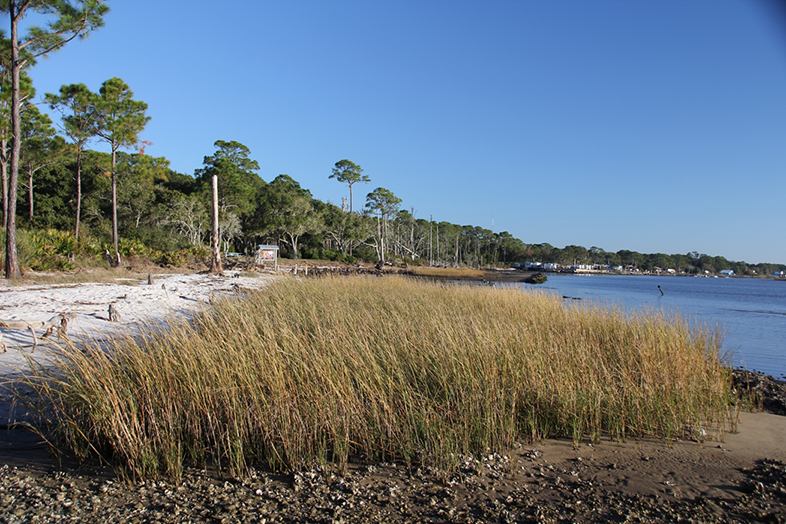By Carrie Schuman, Conservancy of Southwest Florida
Without a doubt, the average Floridian is becoming well-acquainted with amplifying hurricane intensity, flooding from multiple sources including sea level rise and excessively hot days.
Now, local governments and other invested stakeholders are tackling the task of adapting to these challenges. Unfortunately, there is no universal plan with definitive answers on what the right adaptation options are for particular communities. Solutions can include public education, improved emergency response, policy changes including around building codes and built projects that provide physical protection against these stressors.

The traditional approach to protective infrastructure has predominantly relied on hardened or “grey” structures. This refers to man-made structures created out of materials like concrete and steel for purposes like managing stormwater or providing protection to homes and other types of buildings. Some examples include dams, seawalls, flood gates, drainage pipes and stormwater basins.
However, scientific research has shown that efforts like armoring coastlines can have significant negative impacts on the surrounding natural environment. For instance, coastal hardening often impedes natural beach formation resulting in “coastal squeeze.” This can create significant challenges for nesting sea turtles and shorebirds.
Other potential negative outcomes of grey infrastructure include degraded water quality, habitat loss and fragmentation, and reduced health and presence of wildlife. Also, poorly positioned grey options can create inequitable outcomes for human communities they were meant to protect, providing increased flood protection for some, while potentially worsening flooding for others.
This is why the Conservancy of Southwest Florida advocates for a “Nature First” position on resilience. In many locations across the country and globally, there has been a shift in focus to leveraging nature to build resilience to climate stressors by using “green” or nature-based solutions. Examples can include conserving or restoring natural habitats; constructing living shorelines with elements like mangroves, sea grasses and oyster reefs; and developing urban tree planting initiatives.
Nature-based solutions typically provide many benefits like reducing wind and wave energy, absorbing excess carbon and filtering water. They can be more cost-effective and less maintenance-intensive than grey options and can be integral to our local nature-based economy and quality of life.
This does not mean our adaptation needs to be an all-or-nothing commitment to one end of the green-to-grey spectrum. In many places, we will likely need layered options, known as a “multiple lines of defense” strategy, for resilience. In many cases, opting for hybrid approaches, where both hardened and natural elements are used in concert, can help our communities leverage the advantages of both.

However, because of the aforementioned drawbacks to hardened infrastructure, we need to be particularly thoughtful about what options we choose and how we employ them. This includes understanding the environmental and other tradeoffs they represent when incorporated into adaptation plans.
The Conservancy of Southwest Florida would like to see continued exploration and integration of nature-based and hybrid solutions into our local planning efforts to combat issues like heat and flooding. To broaden the conversation around these concepts, the Conservancy is hosting an upcoming fall symposium, “Working with Nature: Nature-based and Hybrid Solutions for Resilient Communities,” on Monday, Oct. 7, from 9 a.m. to 5 p.m. (Editor’s note: Due to Hurricane Milton, the Conservancy rescheduled the symposium to Dec. 2.)
We’ll be presenting a variety of case studies from across the state, along with other content on lessons learned, addressing challenges and improving implementation. Free virtual attendance for the event will be available by Zoom. Information about the event, including an agenda, list of speakers, how to RSVP for virtual attendance and more is available on our event website (conservancy.org/nature-based-solutions-symposium).
Carrie Schuman is principal climate resilience specialist at the Conservancy of Southwest Florida. This opinion piece was originally published by the Fort Myers News-Press, which is a media partner of The Invading Sea.
If you are interested in submitting an opinion piece to The Invading Sea, email Editor Nathan Crabbe at ncrabbe@fau.edu. Sign up for The Invading Sea newsletter by visiting here. To learn more about hybrid solutions for climate resilience, watch the video on gray-green infrastructure below.



